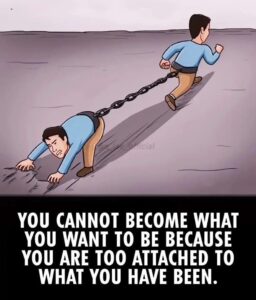IS COUNSELLING HELPING YOU?
Why is it that some people are able to get their issues resolved AND move on in life after simple counselling, and others do not? Here are some reasons, plus some options to consider if regular counselling has not achieved the desired outcome.

DENIAL
People often struggle to understand that they have a mental disorder or have unhealthy ways of operating mentally and emotionally. Denial is a common defence mechanism used to cope with problems- deny that it is actually a problem. They may not see that there is any problem at all, or hugely trivialize the problematic behaviour eg: “I only smoke 5 cigarettes a day, not a whole packet” . The defence mechanism helps them have a sense of self, even if it is partly false. The counsellor must deal with denial at the outset of counselling otherwise if a blind eye is turned to it, there is unlikely to be success with the client’s progress through their problems.
Part of improving a person’s situation is having insight into the truth of the situation. If they lack this insight or have trained their mind to deny they have behavioral problems, then this can be a major obstacle to counselling being effective.
The counsellor’s role is caring and understanding in their guidance, but this must be balance with confrontation of denial.

TOXIC POND
After counselling has resolved issues, some people go back to the “toxic pond” or the environment that caused the problem in the first place. For example, after successful counselling to overcome anxiety arising from workplace bullying, the person does nothing to address the workplace bullying at the workplace, or move on to another job elsewhere, thereby being subjected to ongoing bullying and relapse into anxiety and panic attacks.

SECONDARY BENEFITS
This is where the person cannot stay motivated to continue with counselling or therapy help to get better, or stay better or change for the better, due to the losses they may encounter in doing so. For example, staying in depression provides them with extra care and attention from their spouse which they may not otherwise have received. Or perhaps staying in major depression means they can continue to receive disability payments. Perhaps the person has never worked for years and the idea of getting mentally and emotionally well again scares them as they do not want the challenges of finding a job and interacting with coworkers which only gives them social anxiety.

UNCONSCIOUS PROGRAMMING -UNHEALTHY CORE BELIEFS
Cognitive Behavioural Therapy and other talk therapies may not always overcome strong embedded programs of unhealthy core beliefs, especially if they were formed as a result of a physical or emotional trauma of some kind at a younger age. For example, the unconscious core belief may be “it’s not safe to be seen and heard” or “I cannot trust people if I share how I feel because they will always hurt me”.
These need to be addressed on a subconscious level not just cognitive level to talk it out as the person may not be able to change their automatic behaviour even if they are aware of it. There are therapy techniques such as TRTP that can address this.

MOTIVATIONAL FACTORS
Your motivation to make positive change may seem low but that may not be because you are “weak willed” or lazy or procrastinate. Instead, it may be because the benefits of change have not been fully explored, nor have the detriments of not changing been fully assessed- in other words “ what problems will I have if I don’t make the required change?” The mind will always look to pleasure or achieving goals it believes will bring it to pleasure. Where there is a perception of more pain than pleasure, motivation can drop.

HIGHLY SENSITIVE PERSON PROFILE
People with this profile may have difficulty with emotional regulation. It can stem from unconscious programming of unhealthy core beliefs, which are caused by complex trauma in younger years especially neglect. Particular approaches may need to be made when counselling such a person. The counsellor needs to be both shame and trauma informed.
WRONG APPROACH BY COUNSELLOR/THERAPIST
The counsellor may be using a behavioural modification technique when they need to use a dynamic technique. For more information about the different forms of therapy and counselling read my blog on psychotherapy approaches.
NO RAPPORT WITH COUNSELLOR/THERAPIST
The client’s trust and rapport with their counsellor/therapist is highly important when it comes to working together to resolve problems and issues. There has to be a right fit, complete trust so the client can fully open up and explain their history without fear of judgement or lack of interest.

TYPES OF COUNSELLING AND THERAPY
Coaching
The coaching approach to Counselling to empower is practical and looks at practical solutions. A coaching counsellor can essentially hold your hand through a crisis and see you over to the other side at the same time helping you find solutions as well as helping you build resilience. Coaching this way is a type of therapy that looks to your future rather than a deep dive into your past which you may not be ready for.
DBT or ACT
Dialectical Behavioural Therapy can help people who have suffered from borderline personality disorder or have great difficulty regulating their emotions regardless of regular counselling.
Acceptance and Commitment Therapy has also been shown to be helpful for people that have circumstances they cannot change themselves ie pain from chronic disease or illness, grief from passing family member, unexpected divorce etc.
TRPT AS AN ALL ROUND THERAPY
TRTP has been shown to be successful with cases of self- sabotage and unconscious core beliefs that cannot be talked away. TRTP is a dynamic approach to therapy where most of the work is done by the therapist after a good analysis of the client’s past experiences and making the link with current experiences. TRTP is an all round therapy for those who cannot seem to shift anxiety, depression, stress overload and pstd.

WHAT IS TRTP?
3 Stage Process -Finished in just 1 Month
TRTP™ Therapy resolves trauma related issues – quickly, safely and effectively, with a 3 step process. These trauma-related issues include PTSD, anxiety and depression. It helps individuals overcome chronic emotional dysregulation without retraumatizing to the extent of reliving the past. The therapy is heavily guided by the therapist and not like traditional “talk therapy” where the client keeps repeating all the details of past distressing events. TRTP therapy is a holistic and gentle approach that provides a supportive environment for individuals to heal, grow, and thrive. As it can be fully completed in one month it is ideal for people with acute or situational stress, anxiety or depression to get a solution right away.
The Ideal Online Therapy
There is no need to have TRTP sessions in person; in fact sessions via video conferencing are highly effective because they minimise distractions, have a better audio receptive for the TRTP technique, and help the client to be at ease in their own home.

Book a free Discovery Call
If you would like a complimentary no obligation free introduction telephone call to see if TRTP is right for you and have the chance to ask any questions, you can book here: I want a free introduction call

